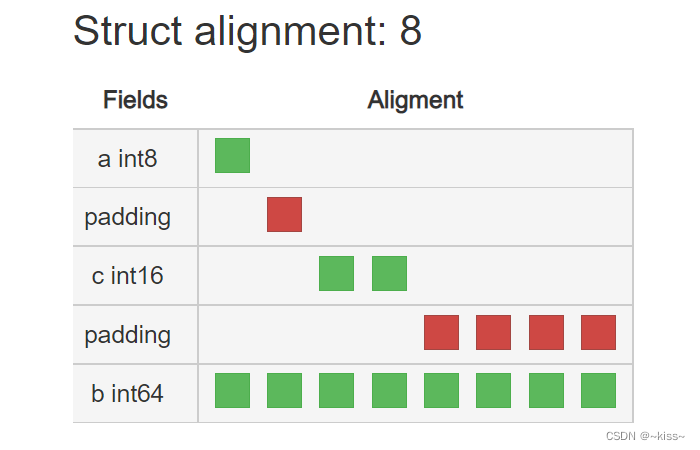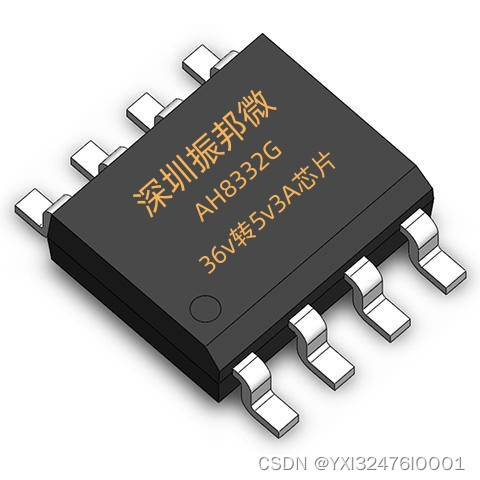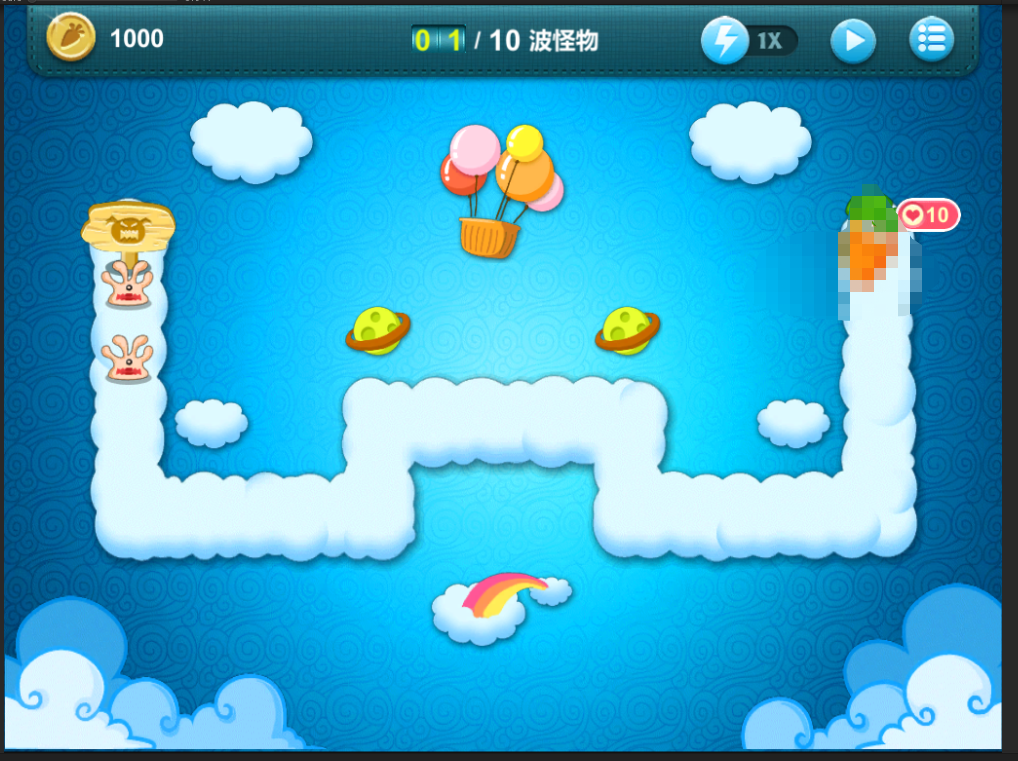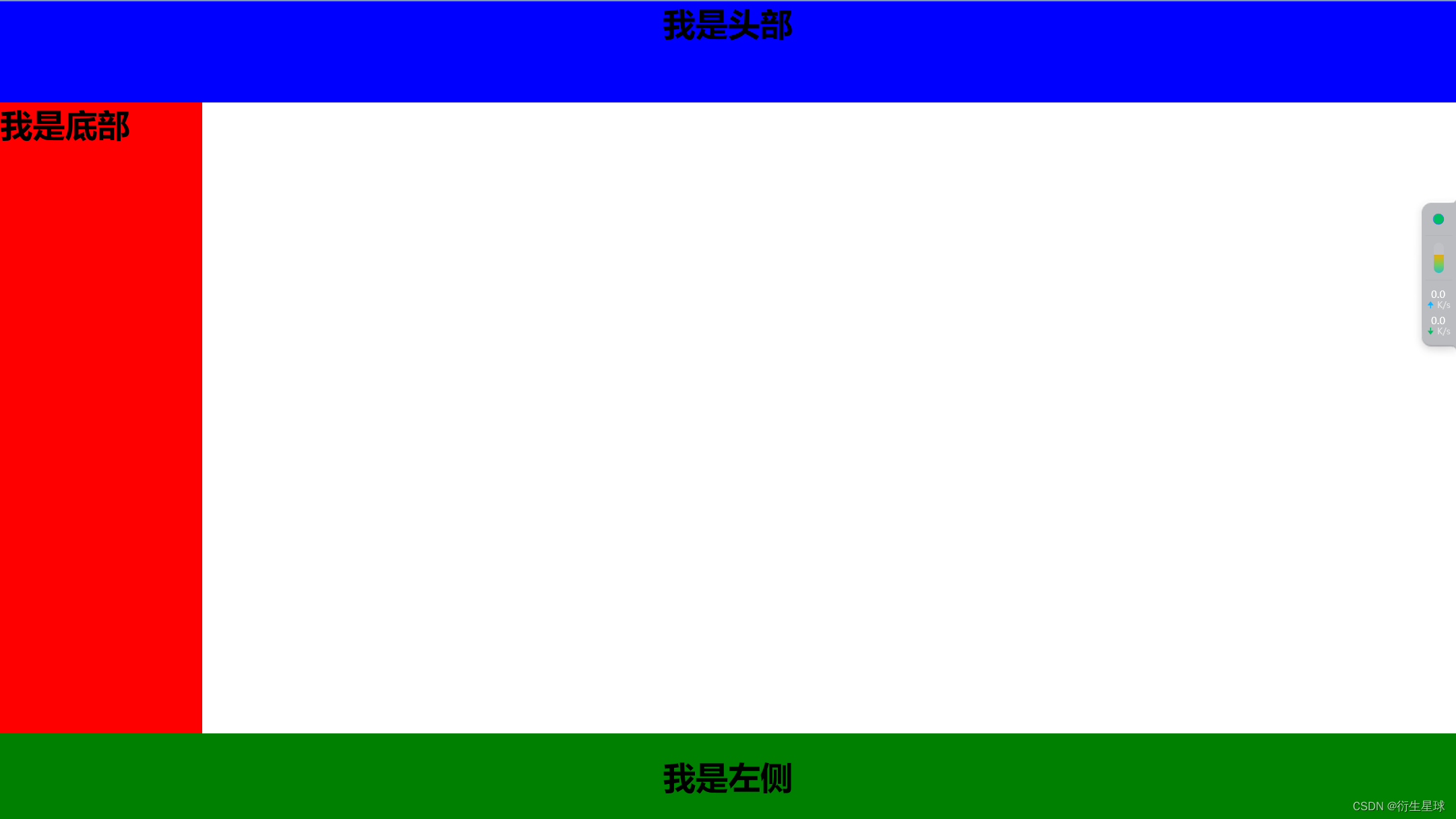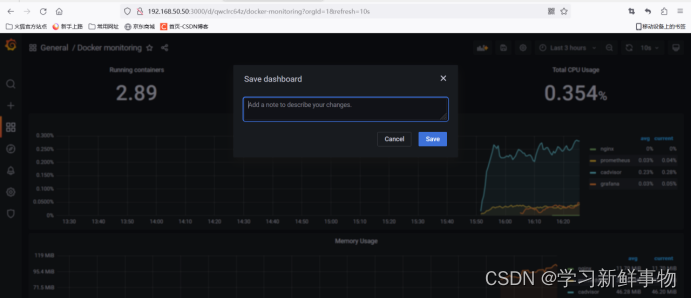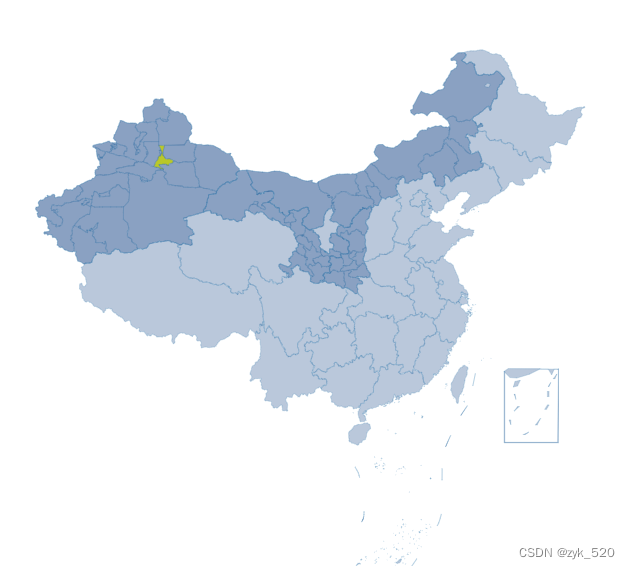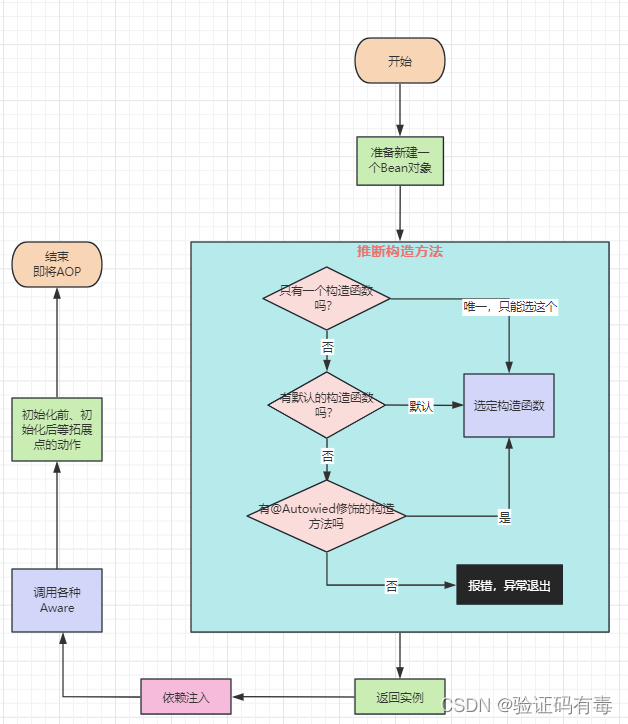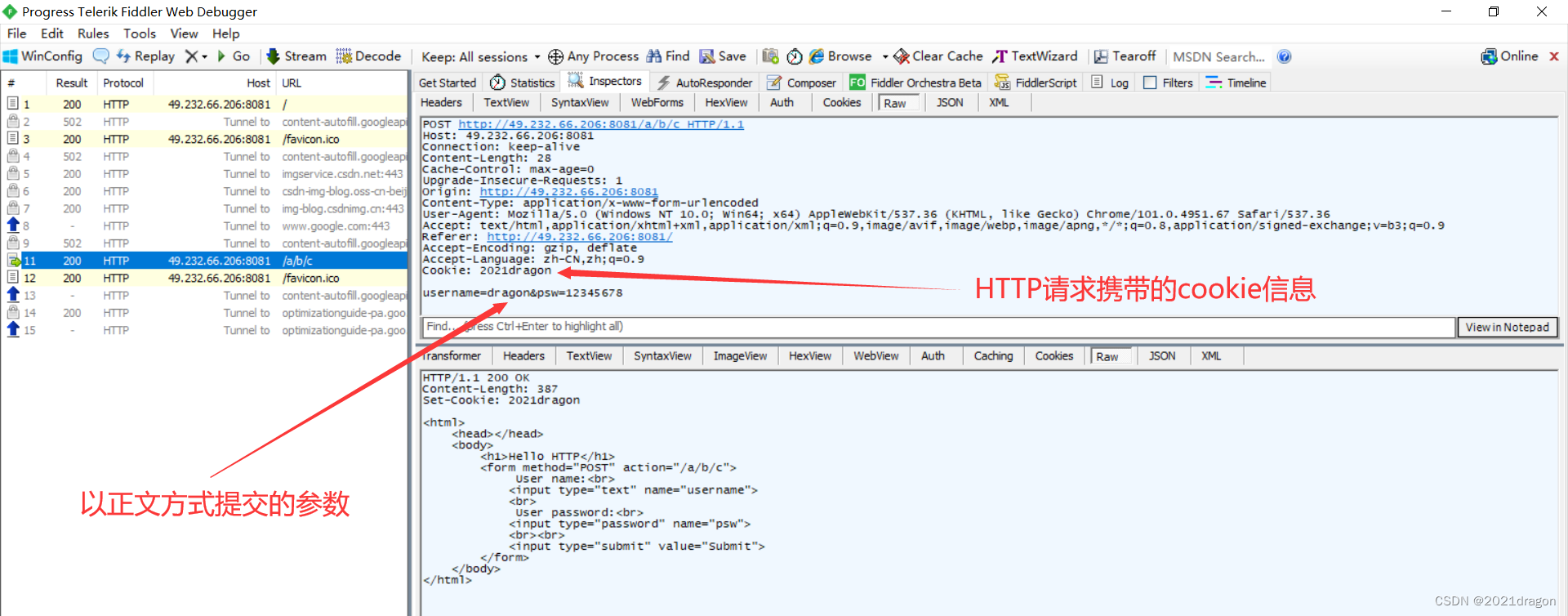目录
一、导入依赖与配置信息
二、导入测试数据创建实体类
三、插入数据
1、Insert默认集合插入
2、Insert指定集合插入
3、Insert批量插入数据
4、save默认集合插入
5、save指定集合插入
6、insert与save的区别
四、修改数据
1、修改符合条件的第一条数据
2、全部修改
五、删除数据
1、删除满足条件的所有文档
2、删除集合里所有文档
3、删除满足条件的单个文档并返回
4、删除满足条件的所有文档并返回
六、查找数据
1、查询全部文档
2、查询指定id的文档
3、查询满足条件的一条文档
4、查询满足条件的所有文档
5、And查询
6、Or查询
7、In查询
8、比较查询
9、正则查询
10、排序查询
11、分页查询
12、统计查询
一、导入依赖与配置信息
首先我们需要在项目中导入所需要的依赖,有两种方式:在项目创建之初选择对应的依赖

如果项目已经创建则在pom.xml文件中加入以下依赖
<dependency>
<groupId>org.springframework.boot</groupId>
<artifactId>spring-boot-starter-data-mongodb</artifactId>
</dependency>在依赖导入后,我们需要在项目的配置文件中配置相对应的信息
spring:
data:
mongodb:
host: IP
port: 27017
database: 数据库
二、导入测试数据创建实体类
在MongoDB中导入数据
db.comment.insertMany([{_id:"1",nickname:"zs",content:"这是一本好书",userId:1,createTime:"2021-01-01T00:00:00",like:1,parentId:0},{_id:"2",nickname:"ls",content:"可是一本好书",userId:2,createTime:"2021-01-01T12:00:00",like:11,parentId:0},{_id:"3",nickname:"ls",content:"不是一本好书",userId:2,createTime:"2021-01-11T12:00:00",like:111,parentId:0}])创建对应的实体类
package com.example.demo.pojo.mongodbVo;
import lombok.Data;
import org.springframework.data.annotation.Id;
import org.springframework.data.mongodb.core.index.Indexed;
import org.springframework.data.mongodb.core.mapping.Document;
import java.io.Serializable;
import java.time.LocalDateTime;
@Data
@Document(collection = "comment")
public class Comment implements Serializable {
@Id
private String id;
private String nickname;
private String content;
@Indexed
private Integer userId;
private LocalDateTime createTime;
private Integer like;
private Integer parentId;
}
三、插入数据
1、Insert默认集合插入
命令:db.comment.insert({_id:"4",nickname:"ww",content:"这位是谁啊",userId:3,createTime:……})
这种方式插入数据会插入到实体类上Document注解对应的集合中
@SpringBootTest
class CommentServiceTest {
@Autowired
private MongoTemplate mongoTemplate;
@Test
void testInsert() {
Comment comment = new Comment("4","ww","这位是谁啊",3, LocalDateTime.now(),1,0);
mongoTemplate.insert(comment);
}
}2、Insert指定集合插入
命令:db.comment.insert({})
@SpringBootTest
class CommentServiceTest {
@Autowired
private MongoTemplate mongoTemplate;
@Test
void testInsert() {
// 1. 构建数据
Comment comment = new Comment("5","ww","这位是老师",3, LocalDateTime.now(),1,0);
// 2. 存储数据库
mongoTemplate.insert(comment,"comment");
}
}3、Insert批量插入数据
命令:db.comment.insert([{},{}])
使用insert进行批量插入时必须指定集合名
@SpringBootTest
class CommentServiceTest {
@Autowired
private MongoTemplate mongoTemplate;
@Test
void testInsert() {
// 1. 构建数据
Comment comment1 = new Comment("4","ww","这位是老师啊",3, LocalDateTime.now(),1,0);
Comment comment2 = new Comment("6","ww","这位是啊",3, LocalDateTime.now(),1,0);
List<Comment> list = new ArrayList<>();
list.add(comment1);
list.add(comment2);
// 2. 存储数据库
mongoTemplate.insert(list,"comment");
}
}4、save默认集合插入
命令:db.comment.save({})
使用save进行插入时会根据id进行判断,如果要插入数据中的id在数据库存在,则会将旧的数据覆盖,如果不存在则插入数据
@SpringBootTest
class CommentServiceTest {
@Autowired
private MongoTemplate mongoTemplate;
@Test
void testInsert() {
// 1. 构建数据
Comment comment = new Comment("4","ww","这位是老师啊12",3, LocalDateTime.now(),1,0);
// 2. 存储数据库
mongoTemplate.save(comment);
}
}5、save指定集合插入
命令:db.comment.save({})
@SpringBootTest
class CommentServiceTest {
@Autowired
private MongoTemplate mongoTemplate;
@Test
void testInsert() {
// 1. 构建数据
Comment comment = new Comment("4","ww","这位是老师啊12",3, LocalDateTime.now(),1,0);
// 2. 存储数据库
mongoTemplate.save(comment,"comment");
}
}6、insert与save的区别
在MongoTemplate中,save()和insert()方法有以下区别:
- save()方法:save()方法用于插入新文档或更新现有文档。如果要保存的文档没有id字段,将插入一个新文档。如果文档具有id字段,MongoDB将尝试使用匹配的id值更新文档。如果找不到具有匹配id的文档,则插入一个新文档。
- insert()方法:insert()方法用于向集合中插入新文档。如果要插入的文档已经具有id字段,并且集合中已经存在具有相同id值的文档,则会抛出异常。这确保插入的文档具有唯一的_id值。
总结:save()方法用于插入和更新操作,而insert()方法专门用于插入新文档,并确保_id字段的唯一性。
四、修改数据
1、修改符合条件的第一条数据
命令:db.comment.update({},{})
@SpringBootTest
class CommentServiceTest {
@Autowired
private MongoTemplate mongoTemplate;
@Test
void testInsert() {
// 1. 构建更新的数据
Comment comment = new Comment("4","ww","这位是老师啊12",3, LocalDateTime.now(),1,0);
// 2. 构建更新的条件
Query query = new Query(Criteria.where("id").is(comment.getId()));
// 3. 构建更新值
Update update = new Update().set("content",comment.getContent()).set("createTime",comment.getCreateTime());
// 4. 更新第一条满足条件的数据
UpdateResult updateResult = mongoTemplate.updateFirst(query, update, Comment.class);
// 5. 判断是否更新
System.out.println(update);
}
}2、全部修改
命令:db.comment.update({},{},{multi:true})
@SpringBootTest
class CommentServiceTest {
@Autowired
private MongoTemplate mongoTemplate;
@Test
void testInsert() {
// 1. 构建更新的数据
Comment comment = new Comment("4","ww","修改全部数据",3, LocalDateTime.now(),1,0);
// 2. 构建更新的条件
Query query = new Query(Criteria.where("nickname").is(comment.getNickname()));
// 3. 构建更新值
Update update = new Update().set("content",comment.getContent()).set("createTime",comment.getCreateTime());
// 4. 更新第一条满足条件的数据
UpdateResult updateResult = mongoTemplate.updateMulti(query, update, Comment.class);
// 5. 判断是否更新
System.out.println(update);
}
}五、删除数据
1、删除满足条件的所有文档
命令:db.comment.remove({})
@SpringBootTest
class CommentServiceTest {
@Autowired
private MongoTemplate mongoTemplate;
@Test
void testInsert() {
// 1. 构建筛选条件
Query query = new Query(Criteria.where("userId").is(2));
// 2. 执行删除操作
DeleteResult remove = mongoTemplate.remove(query, Comment.class);
}
}2、删除集合里所有文档
命令:db.comment.remove({})
@SpringBootTest
class CommentServiceTest {
@Autowired
private MongoTemplate mongoTemplate;
@Test
void testInsert() {
// 1. 执行删除操作
DeleteResult remove = mongoTemplate.remove(new Query(), Comment.class);
}
}3、删除满足条件的单个文档并返回
命令:db.comment.remove({})
@SpringBootTest
class CommentServiceTest {
@Autowired
private MongoTemplate mongoTemplate;
@Test
void testInsert() {
// 1. 构建删除条件
Query query = new Query(Criteria.where("userId").is(1));
// 2. 删除数据接收返回的文档
Comment andRemove = mongoTemplate.findAndRemove(query, Comment.class);
// 3. 打印删除的文档
System.out.println(andRemove);
}
}4、删除满足条件的所有文档并返回
命令:db.comment.remove({})
@SpringBootTest
class CommentServiceTest {
@Autowired
private MongoTemplate mongoTemplate;
@Test
void testInsert() {
// 1. 删除所有满足条件并返回
List<Comment> comments = mongoTemplate.findAllAndRemove(new Query(Criteria.where("userId").is(3)), Comment.class);
// 2. 打印删除
System.out.println(comments);
}
}六、查找数据
1、查询全部文档
命令:db.comment.find()
@SpringBootTest
class CommentServiceTest {
@Autowired
private MongoTemplate mongoTemplate;
@Test
void testInsert() {
// 1. 查询全部文档
List<Comment> comments = mongoTemplate.findAll(Comment.class);
// 2. 打印结果
System.out.println(comments);
}
}2、查询指定id的文档
命令:db.comment.find({_id:"id"})
@SpringBootTest
class CommentServiceTest {
@Autowired
private MongoTemplate mongoTemplate;
@Test
void testInsert() {
// 1. 查询文档
Comment comment = mongoTemplate.findById("1", Comment.class);
// 2. 打印结果
System.out.println(comment);
}
}3、查询满足条件的一条文档
命令:db.comment.findOne({})
@SpringBootTest
class CommentServiceTest {
@Autowired
private MongoTemplate mongoTemplate;
@Test
void testInsert() {
// 1. 查询文档
Comment comment = mongoTemplate.findOne(new Query(Criteria.where("nickname").is("ww")),Comment.class);
// 2. 打印结果
System.out.println(comment);
}
}4、查询满足条件的所有文档
命令:db.comment.find({})
@SpringBootTest
class CommentServiceTest {
@Autowired
private MongoTemplate mongoTemplate;
@Test
void testInsert() {
// 1. 查询文档
List<Comment> comments = mongoTemplate.find(new Query(Criteria.where("nickname").is("ww")),Comment.class);
// 2. 打印结果
System.out.println(comments);
}
}5、And查询
命令:db.comment.find({$and:[{},{}]})
@SpringBootTest
public class PersonServiceTest {
@Autowired
private MongoTemplate mongoTemplate;
@Test
public void findByAndCondition() {
// 1.创建将要and的条件
Criteria criteriaNickName = Criteria.where("nickame").is("ww");
Criteria criteriaLike = Criteria.where("like").is(1);
// 2.将上面条件进行and关联
Criteria criteria = new Criteria().andOperator(criteriaNickName, criteriaLike);
// 3.条件对象添加到其中
Query query = new Query(criteria);
List<Comment> result = mongoTemplate.find(query, Comment.class);
System.out.println("查询结果:" + result.toString());
}
}6、Or查询
命令:db.comment.find({$or:[{},{}]})
下面代码简写,具体可参照上述and写法,效果一致
@SpringBootTest
class CommentServiceTest {
@Autowired
private MongoTemplate mongoTemplate;
@Test
void testInsert() {
// 1. 查询文档
List<Comment> comments = mongoTemplate.find(new Query(
new Criteria().orOperator(
Criteria.where("nickname").is("ww"),
Criteria.where("like").is(10)
)
), Comment.class);
// 2. 打印结果
System.out.println(comments);
}
}7、In查询
命令:db.comment.find({count:{$in:[11,12]}})
@SpringBootTest
class CommentServiceTest {
@Autowired
private MongoTemplate mongoTemplate;
@Test
void testInsert() {
// 1. 查询文档
List<Integer> ins = Arrays.asList(1,0,2);
List<Comment> comments = mongoTemplate.find(new Query(Criteria.where("like").in(ins)), Comment.class);
// 2. 打印结果
System.out.println(comments);
}
}8、比较查询
命令:db.comment.find({ "like": { $gt: 0, $lt: 5 } })
@SpringBootTest
class CommentServiceTest {
@Autowired
private MongoTemplate mongoTemplate;
@Test
void testInsert() {
// 1. 查询文档
Query query = new Query(Criteria.where("like").gt(0).lt(5)); // 查询大于0小于5
List<Comment> comments = mongoTemplate.find(query, Comment.class);
// 2. 打印结果
System.out.println(comments);
}
}9、正则查询
命令:db.collectionName.find({ "nickname": { $regex: '^w' } })
@SpringBootTest
class CommentServiceTest {
@Autowired
private MongoTemplate mongoTemplate;
@Test
void testInsert() {
// 1. 查询文档
List<Comment> comments = mongoTemplate.find(new Query(Criteria.where("nickname").regex("^w")), Comment.class); // 查询nickname中w开头的数据
// 2. 打印结果
System.out.println(comments);
}
}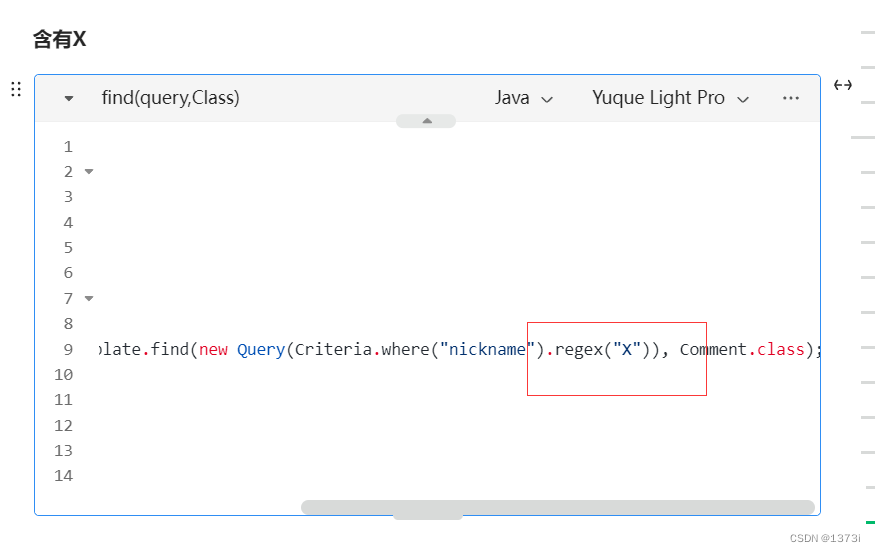
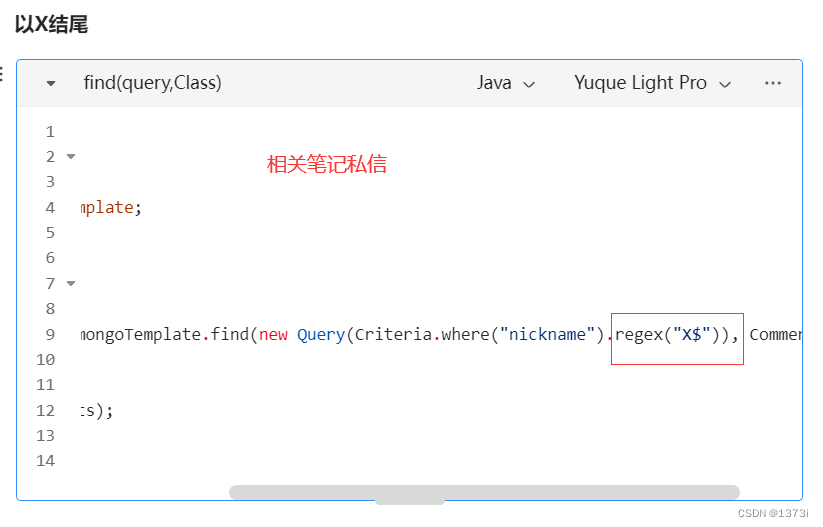
10、排序查询
命令:db.collectionName.find({ "nickname": "ww" }).sort({ "like": 1 })
@SpringBootTest
class CommentServiceTest {
@Autowired
private MongoTemplate mongoTemplate;
@Test
void testInsert() {
// 1. 查询文档
Query query = new Query(Criteria.where("nickname").is("ww")).with(Sort.by("id").descending());
List<Comment> comments = mongoTemplate.find(query, Comment.class);
// 2. 打印结果
System.out.println(comments);
}
}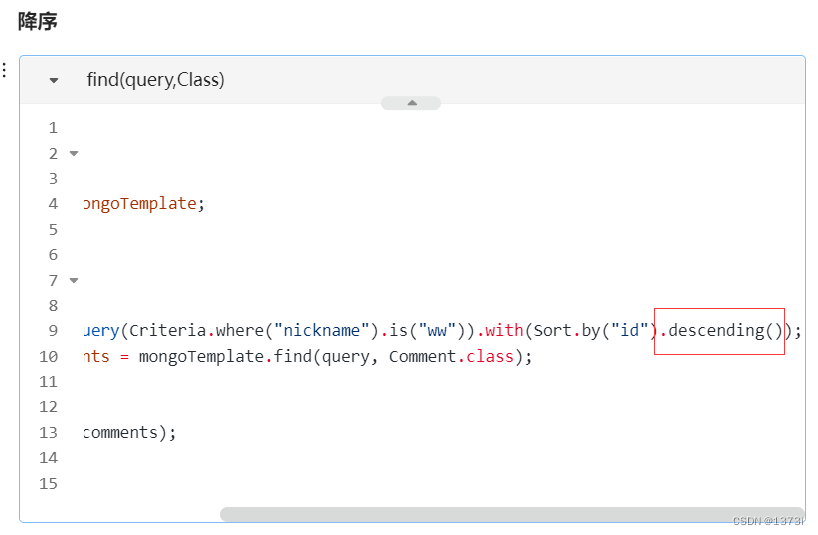
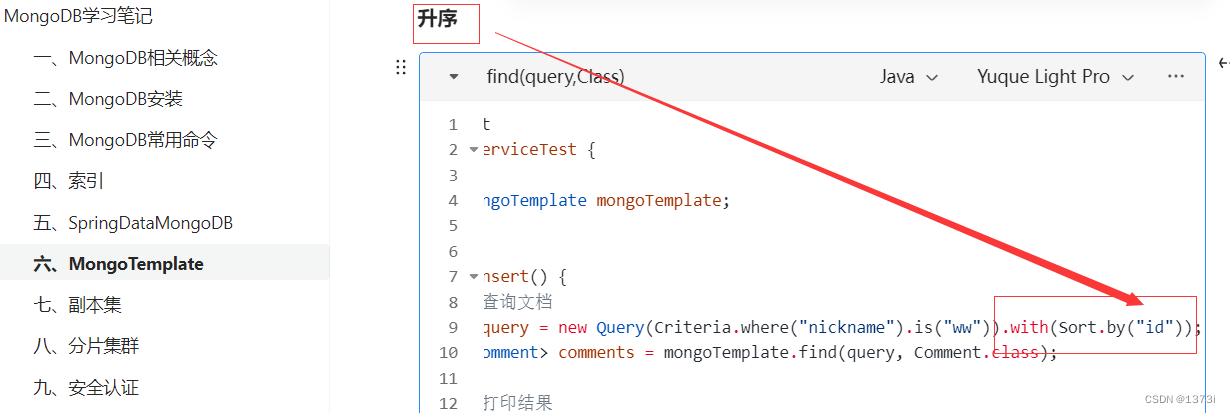
11、分页查询
命令:db.comment.find({}).skip(2).limit(2)
@SpringBootTest
class CommentServiceTest {
@Autowired
private MongoTemplate mongoTemplate;
@Test
void testInsert() {
// 1. 查询文档
Query query = new Query(Criteria.where("nickname").is("ww")).skip(2).limit(2);
List<Comment> comments = mongoTemplate.find(query, Comment.class);
// 2. 打印结果
System.out.println(comments);
}
}12、统计查询
命令:db.comment.count({})
@SpringBootTest
class CommentServiceTest {
@Autowired
private MongoTemplate mongoTemplate;
@Test
void testInsert() {
// 1. 查询文档
Query query = new Query(Criteria.where("nickname").is("ww"));
long count = mongoTemplate.count(query, Comment.class);
// 2. 打印结果
System.out.println(count);
}
}
